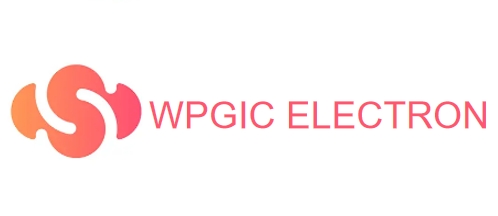Market Prospects for Capacitors

I. Introduction
Capacitors are fundamental components in electronic circuits, serving as energy storage devices that can release energy quickly when needed. They play a crucial role in a wide range of applications, from consumer electronics to industrial machinery. As technology continues to evolve, the demand for capacitors is expected to grow, driven by advancements in various sectors. This blog post explores the market prospects for capacitors, examining the different types, key applications, market drivers, challenges, and future trends.
II. Types of Capacitors
Capacitors come in various types, each with unique characteristics and applications. Understanding these types is essential for grasping the market dynamics.
A. Ceramic Capacitors
Ceramic capacitors are widely used due to their small size, low cost, and reliability. They are commonly found in consumer electronics, such as smartphones and tablets. The market for ceramic capacitors is expected to grow significantly, driven by the increasing demand for compact and efficient electronic devices.
B. Electrolytic Capacitors
Electrolytic capacitors are known for their high capacitance values and are often used in power supply applications. They are essential in smoothing out voltage fluctuations in electronic circuits. The market for electrolytic capacitors is also on the rise, particularly in the automotive and industrial sectors, where energy efficiency is paramount.
C. Film Capacitors
Film capacitors are characterized by their stability and low loss, making them ideal for high-frequency applications. They are commonly used in audio equipment and power electronics. The market for film capacitors is expected to grow as industries seek reliable components for high-performance applications.
D. Tantalum Capacitors
Tantalum capacitors are known for their high capacitance and reliability in compact designs. They are often used in military and aerospace applications, as well as in consumer electronics. The market for tantalum capacitors is projected to expand, driven by the increasing demand for high-performance components in critical applications.
E. Supercapacitors
Supercapacitors, or ultracapacitors, are unique in their ability to store large amounts of energy and release it quickly. They are increasingly used in energy storage systems and electric vehicles. The market for supercapacitors is expected to grow rapidly, fueled by the rise of renewable energy and electric mobility.
III. Key Applications of Capacitors
Capacitors find applications across various industries, each contributing to the overall market growth.
A. Consumer Electronics
The consumer electronics sector is one of the largest markets for capacitors. With the proliferation of smartphones, tablets, and laptops, the demand for capacitors is surging. As devices become more sophisticated, the need for efficient and compact capacitors will continue to drive market growth.
B. Automotive Industry
The automotive industry is undergoing a transformation with the rise of electric vehicles (EVs) and advanced driver-assistance systems (ADAS). Capacitors play a vital role in these technologies, providing energy storage and management solutions. The market for capacitors in the automotive sector is expected to grow significantly as more manufacturers shift towards electric mobility.
C. Industrial Applications
In industrial settings, capacitors are essential for automation and control systems. They help maintain voltage stability and improve energy efficiency. The increasing adoption of automation technologies is expected to drive the demand for capacitors in industrial applications.
D. Renewable Energy
The renewable energy sector, particularly solar and wind energy, relies heavily on capacitors for energy storage and management. As governments worldwide push for cleaner energy solutions, the market for capacitors in renewable energy applications is poised for substantial growth.
IV. Market Drivers
Several factors are driving the growth of the capacitor market.
A. Technological Advancements
Technological advancements, such as miniaturization and increased efficiency, are reshaping the capacitor market. Manufacturers are continually innovating to produce smaller, more efficient capacitors that meet the demands of modern electronics.
B. Growing Demand for Consumer Electronics
The rise of smart devices and the Internet of Things (IoT) is driving the demand for capacitors. As consumers seek more connected and efficient devices, capacitor manufacturers must adapt to these trends to remain competitive.
C. Rise of Electric Vehicles
The shift towards electric vehicles is creating a surge in demand for high-performance capacitors. These components are essential for energy storage and management in EVs, making them a critical focus for manufacturers.
D. Renewable Energy Initiatives
Government policies and incentives promoting renewable energy are driving the growth of the capacitor market. As energy storage solutions become more critical, capacitors will play a vital role in supporting these initiatives.
V. Challenges Facing the Capacitor Market
Despite the positive outlook, the capacitor market faces several challenges.
A. Supply Chain Disruptions
Global events, such as pandemics and geopolitical tensions, have disrupted supply chains, affecting the availability of raw materials and components. Manufacturers must develop strategies to mitigate these disruptions and ensure a steady supply of capacitors.
B. Competition and Market Saturation
The capacitor market is highly competitive, with numerous players vying for market share. Companies must differentiate themselves through innovation and quality to succeed in this saturated market.
C. Environmental Regulations
As environmental concerns grow, manufacturers face compliance challenges related to regulations on materials and production processes. Innovations in sustainable capacitor technologies will be essential for meeting these regulations and appealing to environmentally conscious consumers.
VI. Future Trends and Innovations
The capacitor market is poised for significant advancements in the coming years.
A. Development of New Materials
Research into new materials, such as graphene, is expected to revolutionize capacitor technology. These advanced materials could enhance performance and reduce costs, making capacitors more efficient and accessible.
B. Smart Capacitors
The integration of capacitors with IoT and smart technologies is an emerging trend. Smart capacitors can provide real-time data and improve energy management, opening up new applications and market potential.
C. Energy Storage Solutions
Capacitors will play a crucial role in hybrid energy storage systems, combining the benefits of traditional batteries and supercapacitors. This trend will have significant implications for energy storage technologies and their applications in various sectors.
VII. Conclusion
The market prospects for capacitors are promising, driven by technological advancements, growing demand in key applications, and the rise of electric vehicles and renewable energy initiatives. However, challenges such as supply chain disruptions and environmental regulations must be addressed. As the industry evolves, stakeholders must remain agile and innovative to capitalize on emerging opportunities.
In summary, the future of capacitors is bright, with numerous growth avenues on the horizon. Stakeholders in the industry should stay informed and proactive to navigate the changing landscape and harness the potential of this essential component in modern electronics.
VIII. References
A comprehensive list of sources and further reading materials would typically follow here, providing readers with additional insights and information on the capacitor market.
Market Prospects for Capacitors

I. Introduction
Capacitors are fundamental components in electronic circuits, serving as energy storage devices that can release energy quickly when needed. They play a crucial role in a wide range of applications, from consumer electronics to industrial machinery. As technology continues to evolve, the demand for capacitors is expected to grow, driven by advancements in various sectors. This blog post explores the market prospects for capacitors, examining the different types, key applications, market drivers, challenges, and future trends.
II. Types of Capacitors
Capacitors come in various types, each with unique characteristics and applications. Understanding these types is essential for grasping the market dynamics.
A. Ceramic Capacitors
Ceramic capacitors are widely used due to their small size, low cost, and reliability. They are commonly found in consumer electronics, such as smartphones and tablets. The market for ceramic capacitors is expected to grow significantly, driven by the increasing demand for compact and efficient electronic devices.
B. Electrolytic Capacitors
Electrolytic capacitors are known for their high capacitance values and are often used in power supply applications. They are essential in smoothing out voltage fluctuations in electronic circuits. The market for electrolytic capacitors is also on the rise, particularly in the automotive and industrial sectors, where energy efficiency is paramount.
C. Film Capacitors
Film capacitors are characterized by their stability and low loss, making them ideal for high-frequency applications. They are commonly used in audio equipment and power electronics. The market for film capacitors is expected to grow as industries seek reliable components for high-performance applications.
D. Tantalum Capacitors
Tantalum capacitors are known for their high capacitance and reliability in compact designs. They are often used in military and aerospace applications, as well as in consumer electronics. The market for tantalum capacitors is projected to expand, driven by the increasing demand for high-performance components in critical applications.
E. Supercapacitors
Supercapacitors, or ultracapacitors, are unique in their ability to store large amounts of energy and release it quickly. They are increasingly used in energy storage systems and electric vehicles. The market for supercapacitors is expected to grow rapidly, fueled by the rise of renewable energy and electric mobility.
III. Key Applications of Capacitors
Capacitors find applications across various industries, each contributing to the overall market growth.
A. Consumer Electronics
The consumer electronics sector is one of the largest markets for capacitors. With the proliferation of smartphones, tablets, and laptops, the demand for capacitors is surging. As devices become more sophisticated, the need for efficient and compact capacitors will continue to drive market growth.
B. Automotive Industry
The automotive industry is undergoing a transformation with the rise of electric vehicles (EVs) and advanced driver-assistance systems (ADAS). Capacitors play a vital role in these technologies, providing energy storage and management solutions. The market for capacitors in the automotive sector is expected to grow significantly as more manufacturers shift towards electric mobility.
C. Industrial Applications
In industrial settings, capacitors are essential for automation and control systems. They help maintain voltage stability and improve energy efficiency. The increasing adoption of automation technologies is expected to drive the demand for capacitors in industrial applications.
D. Renewable Energy
The renewable energy sector, particularly solar and wind energy, relies heavily on capacitors for energy storage and management. As governments worldwide push for cleaner energy solutions, the market for capacitors in renewable energy applications is poised for substantial growth.
IV. Market Drivers
Several factors are driving the growth of the capacitor market.
A. Technological Advancements
Technological advancements, such as miniaturization and increased efficiency, are reshaping the capacitor market. Manufacturers are continually innovating to produce smaller, more efficient capacitors that meet the demands of modern electronics.
B. Growing Demand for Consumer Electronics
The rise of smart devices and the Internet of Things (IoT) is driving the demand for capacitors. As consumers seek more connected and efficient devices, capacitor manufacturers must adapt to these trends to remain competitive.
C. Rise of Electric Vehicles
The shift towards electric vehicles is creating a surge in demand for high-performance capacitors. These components are essential for energy storage and management in EVs, making them a critical focus for manufacturers.
D. Renewable Energy Initiatives
Government policies and incentives promoting renewable energy are driving the growth of the capacitor market. As energy storage solutions become more critical, capacitors will play a vital role in supporting these initiatives.
V. Challenges Facing the Capacitor Market
Despite the positive outlook, the capacitor market faces several challenges.
A. Supply Chain Disruptions
Global events, such as pandemics and geopolitical tensions, have disrupted supply chains, affecting the availability of raw materials and components. Manufacturers must develop strategies to mitigate these disruptions and ensure a steady supply of capacitors.
B. Competition and Market Saturation
The capacitor market is highly competitive, with numerous players vying for market share. Companies must differentiate themselves through innovation and quality to succeed in this saturated market.
C. Environmental Regulations
As environmental concerns grow, manufacturers face compliance challenges related to regulations on materials and production processes. Innovations in sustainable capacitor technologies will be essential for meeting these regulations and appealing to environmentally conscious consumers.
VI. Future Trends and Innovations
The capacitor market is poised for significant advancements in the coming years.
A. Development of New Materials
Research into new materials, such as graphene, is expected to revolutionize capacitor technology. These advanced materials could enhance performance and reduce costs, making capacitors more efficient and accessible.
B. Smart Capacitors
The integration of capacitors with IoT and smart technologies is an emerging trend. Smart capacitors can provide real-time data and improve energy management, opening up new applications and market potential.
C. Energy Storage Solutions
Capacitors will play a crucial role in hybrid energy storage systems, combining the benefits of traditional batteries and supercapacitors. This trend will have significant implications for energy storage technologies and their applications in various sectors.
VII. Conclusion
The market prospects for capacitors are promising, driven by technological advancements, growing demand in key applications, and the rise of electric vehicles and renewable energy initiatives. However, challenges such as supply chain disruptions and environmental regulations must be addressed. As the industry evolves, stakeholders must remain agile and innovative to capitalize on emerging opportunities.
In summary, the future of capacitors is bright, with numerous growth avenues on the horizon. Stakeholders in the industry should stay informed and proactive to navigate the changing landscape and harness the potential of this essential component in modern electronics.
VIII. References
A comprehensive list of sources and further reading materials would typically follow here, providing readers with additional insights and information on the capacitor market.













